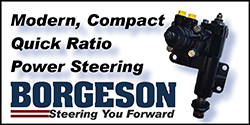Hi, does anyone know for sure if this spring will work, please see pictures
Does anyone know what tolerance value constitutes coil bind on a valve spring? Shown in picture is the spring I have installed and the valve is shown fully open - at max lift at the lobe (using a solid lifter for accurate measurements). The coils are not touching in three places (middle and the coils above and below) and the max I can measure is about 30 thou (0.030") between middle coils. Coils are tight at the top and bottom. I read that there is no hard and fast rule with binding tolerance, it all varies between spring types and materials. From 0.020 to 120.
This is a hydraulic cam, these springs are not locked up solid but I think these springs might be a little close for comfort (lift is advertised at 0.525/0.525). What are other people's thoughts on using these springs for running in this new cam? Thanks


Does anyone know what tolerance value constitutes coil bind on a valve spring? Shown in picture is the spring I have installed and the valve is shown fully open - at max lift at the lobe (using a solid lifter for accurate measurements). The coils are not touching in three places (middle and the coils above and below) and the max I can measure is about 30 thou (0.030") between middle coils. Coils are tight at the top and bottom. I read that there is no hard and fast rule with binding tolerance, it all varies between spring types and materials. From 0.020 to 120.
This is a hydraulic cam, these springs are not locked up solid but I think these springs might be a little close for comfort (lift is advertised at 0.525/0.525). What are other people's thoughts on using these springs for running in this new cam? Thanks
















